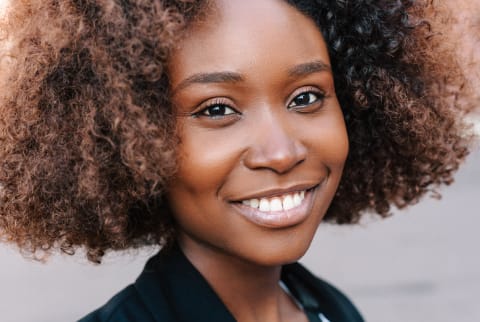Advertisement
There Are 3 Main Categories Of Conditioner: Which You Need + How To Use Them


Conditioner's role is to increase the moisture content of the hair and improve its elasticity, smooth the cuticle, and soften the hair fiber. There are three main categories of conditioner, all of which play an important part in the health and well-being of our hair.
Rinse-out conditioners & leave-in conditioners
A rinse-out conditioner is a lightweight conditioner that can be used daily and is meant to be washed out. This type of conditioner needs to have a lot of "slip," meaning very slippery, as it helps to detangle our curls. You can use this before you wash your hair if your hair is very tangled or matted.
However, be very gentle with your hair when it is wet, as it is most fragile then. This type of conditioner will hydrate your hair and help it to be less frizzy, as its purpose is to also smooth your cuticles and add softness. (Think of when you add softener to your clothes after washing them.)
A leave-in conditioner, on the other hand, locks the moisture in the hair strands for a longer period than a conditioner you rinse out. You might want to use this type of conditioner when you get your hair wet and after you shampoo. The role of these conditioners is to refortify the cuticle with a protective coating and add additional moisture to the cortex, allowing the hair to keep growing without breaking.
A leave-in conditioner is to be used after washing your hair to replenish and maintain moisture. They are not rinsed out and are useful for controlling frizz, detangling strands, and keeping curls smooth. These conditioners are normally light lotions, creams, or liquids. Leave-in sprays are also effective; they are easy to apply to the ends of hair that need special attention and protection for retaining length.
Protein conditioner
Our hair is made up of a protein called keratin, which makes up approximately 91% of the strand. When our hair lacks protein, it's essentially missing its DNA. This affects the strength and resilience of the hair strand to be able to withstand the day-to-day manipulation of combing, washing, styling, etc. If protein is lost and not replaced, the hair will become weak and eventually break off.
Other things that affect the protein structure of the hair include:
- Chemicals, including dyes, weakening the hair structure
- Poor care, leading to cuticle damage
- A poor diet lacking in protein-rich foods
Light protein conditioners and deep conditioners that are protein-based can be used weekly or every two weeks as part of a healthy hair care regimen to support a moisture-protein balance, depending on your individual hair needs. Reconstructors and protein packs are generally designed for more damaged hair and are recommended to be used monthly, depending on the hair's health and the needs of the individual.
What might indicate my hair needs a protein treatment?
- Hair feels soft and mushy and unable to hold a curl or appears stringy.
- When you stretch your hair, it breaks off.
- Hair appears limp and lifeless.
Deep conditioning
A deep conditioner is an intensive moisturizing and nourishing treatment, also called "deep treatment" and "masque." These can be broken down into two categories: those meant to provide proteins, and those primarily for moisture. As you may know, healthy hair is a balance between moisture and protein, so we need to use both, depending on the individual needs of our hair.
These conditioners are normally quite thick in consistency and should be left on the hair, with heat, for 20 to 30 minutes. Think of deep conditioners as a five-star meal for your hair. Specifically, this type of treatment has significant benefits to the overall health and well-being of Afro-textured hair. Deep treatments can be used weekly or every two weeks depending on the current health status of your hair and individual needs.
Of course, you will need to take into account your hair's characteristics, such as texture (fine, medium, or thick strands), your porosity, elasticity, and the strength of your hair. All of this will help you think about the products and possible changes in styling your hair that best support its health needs.
Adapted from You and Your Hair by Sarah Roberts. Reprinted with permission from Sarah Roberts © 2020.